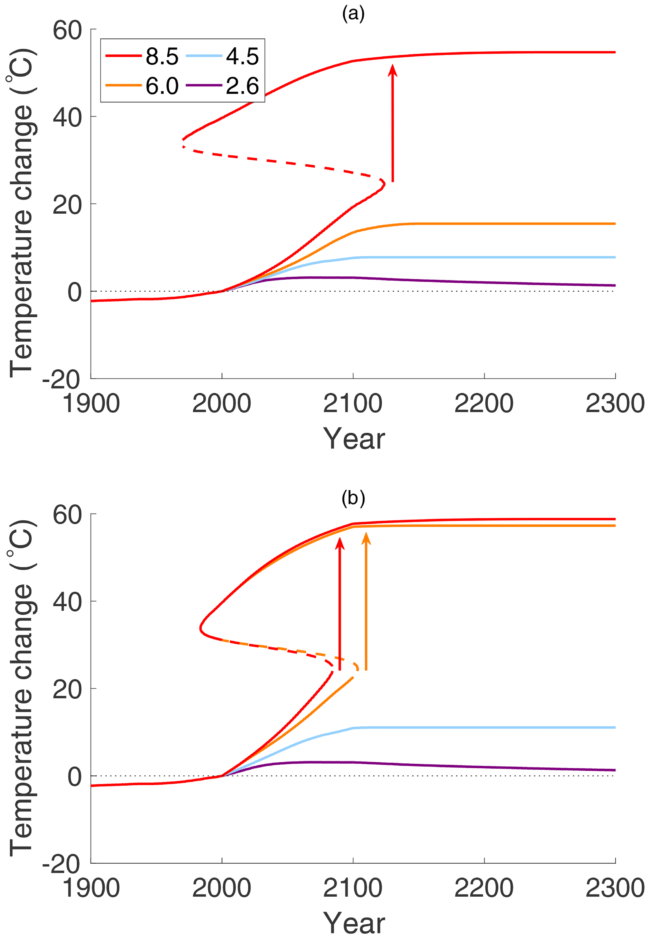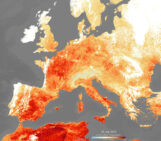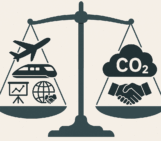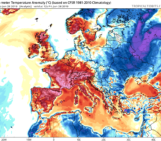
The July 2020 NPG Paper of the Month award goes to Kolja Kypke, William Langford and Allan Willms, for their paper “Anthropocene climate bifurcation” (https://doi.org/10.5194/npg-27-391-2020).
All three authors work at the University of Guelph, in Guelph, Ontario, Canada. William Langford did his PhD at the California Institute of Technology in 1971 under the supervision of Herbert Keller, and has worked on bifurcation theory and its applications for more than half a century. He is now University Professor Emeritus of Mathematics. Allan Willms did his PhD at Cornell University in 1997 under the supervision of John Guckenheimer, and is now Professor of Mathematics. Kolja Kypke is a PhD student in mathematics, under the joint supervision of Professors Langford and Willms.
In previous papers the authors have presented a nonlinear energy balance model of climate processes, based on deterministic geophysical principles and largely disregarding local weather data. The model includes the effects of water vapour feedback and ice albedo feedback, as well as ocean and atmospheric heat transport. They have shown that this nonlinear model can exhibit two coexisting stable climate states (bistability), as well as mathematical bifurcations that may give abrupt and dramatic transitions between these two states (Kypke and Langford, 2020). This model was applied first to known changes in the paleoclimate record. Both the Eocene-Oligocene Transition (34 Ma) and the Pliocene-Pleistocene Transition (4 Ma) correspond closely to bifurcations that are predicted by the model (Dortmans et al., 2019).
In the present paper, the authors employ this model to forecast climate changes in the Anthropocene Arctic. Other climate models predict that the climate of the Arctic is warming and will continue to warm in coming centuries, if there is no mitigation. This paper predicts that (without mitigation) the climate of the Arctic will not only get warmer, but it will transition abruptly via a bifurcation, to a much warmer equable climate unlike any climate seen on Earth since the Pliocene. This transition to a new climate state is a topological change, or bifurcation.
The four Representative Concentration Pathways (RCP) considered by the IPCC are used to model future CO2 concentrations, corresponding to different scenarios of anthropogenic activity (IPCC, 2013). On RCP 8.5, a bifurcation resulting in a catastrophic climate change is inevitable in the model, as shown in Figure 1(a). Mitigation to RCP 6.0 could still result in a bifurcation, if increasing ocean and atmospheric heat transports both come into play, see Figure 1(b). Stronger mitigation strategies (RCP 4.5 and 2.6) may avoid the catastrophic bifurcation, but still involve significant warming.
References
Dortmans, B., Langford, W. F., and Willms, A. R.: An energy balance model for paleoclimate transitions, Clim. Past 15, 493-520, 2019 (doi.org/10.5194/cp-15-493-2019).
Intergovernmental Panel on Climate Change: Climate Change 2013: The Physical Science Basis. In: Contribution of Working Group I to the Fifth Assessment Report of the Intergovernmental Panel on Climate Change, edited by: Stocker, T. F., Qin, D., Plattner, G. K., Tignor, M., Allen, S. K., Boschung, J., Nauels, A., Xia, Y., Bex, V., and Midgley, P. M.: Cambridge Univ. Press, Cambridge, UK and New York, NY, USA, 2013. available at: http://www.ipcc.ch/ (last access: 11 March 2019).
Kypke, K. L. and Langford, W. F.: Topological climate change, Int. J. Bifurcation Chaos, 30, No. 2, 29 pp., 2020 (doi:10.1142/S0218127420300050).




